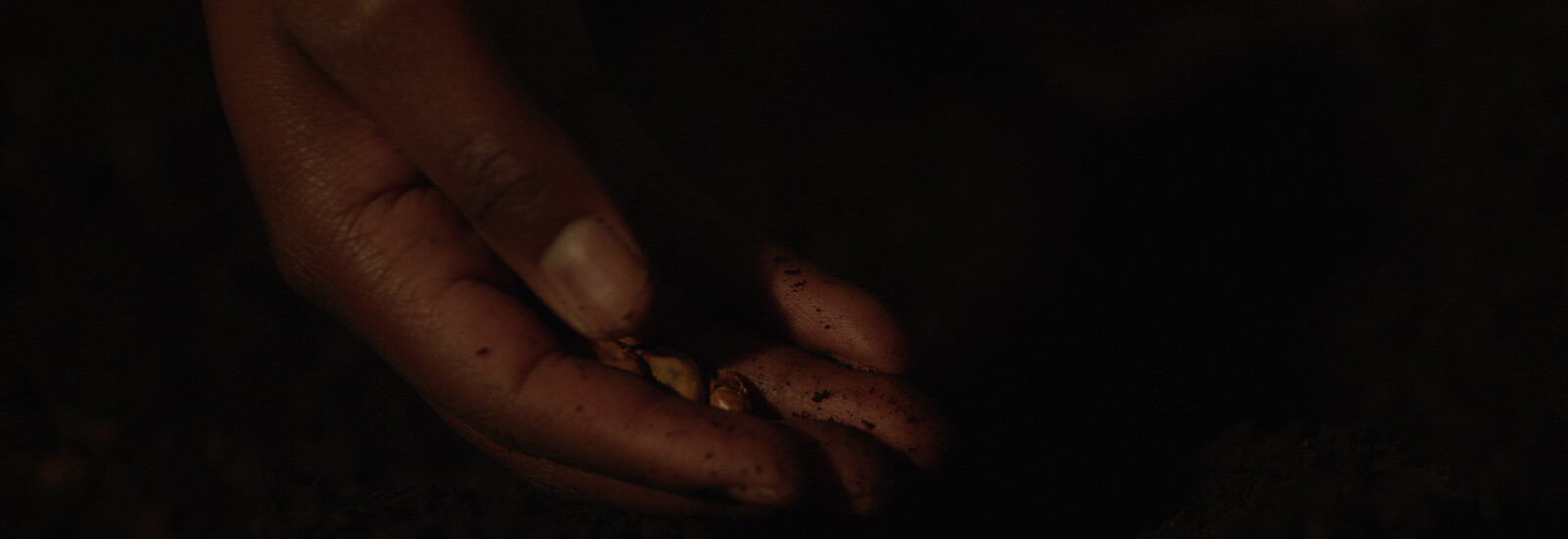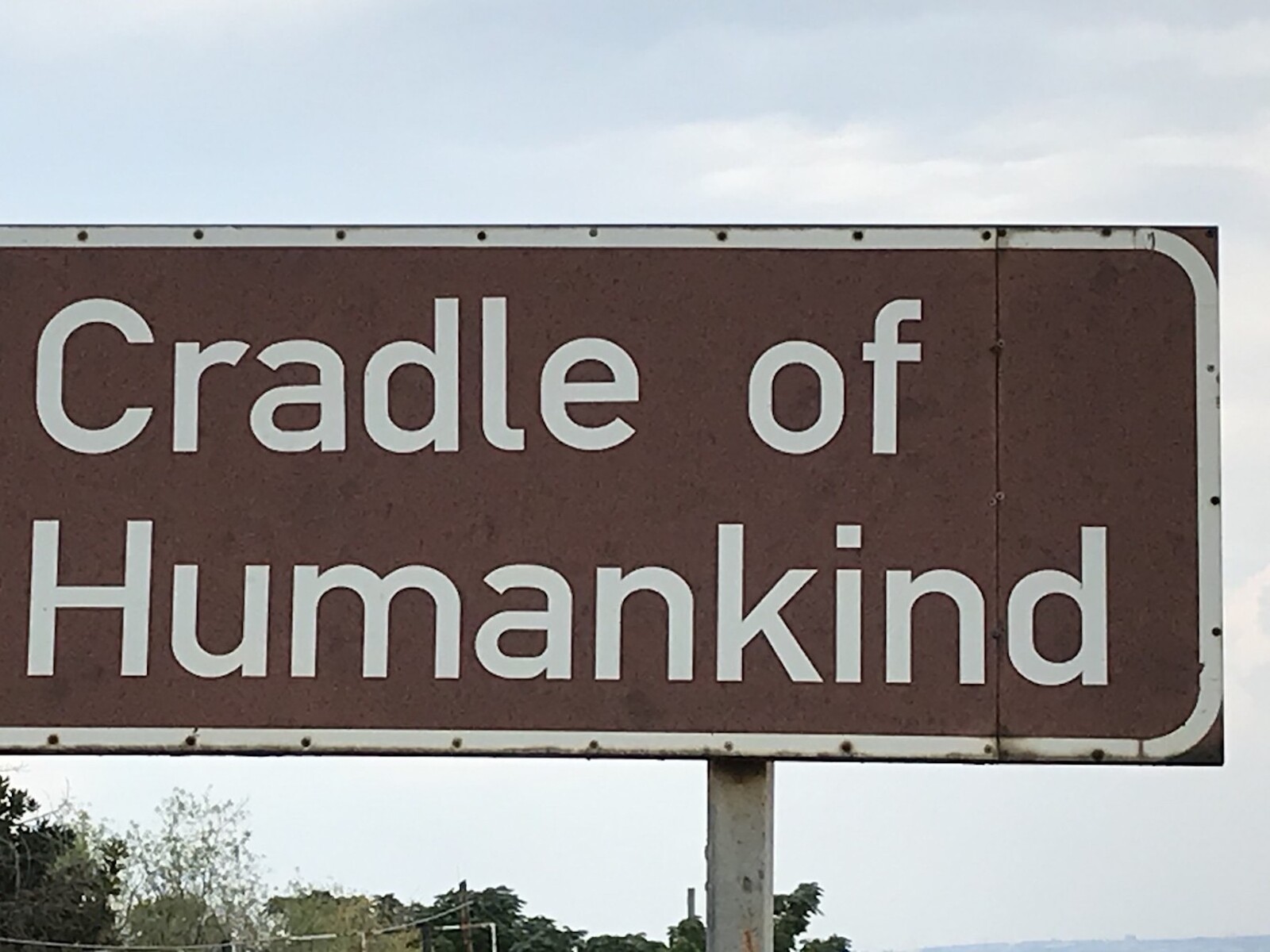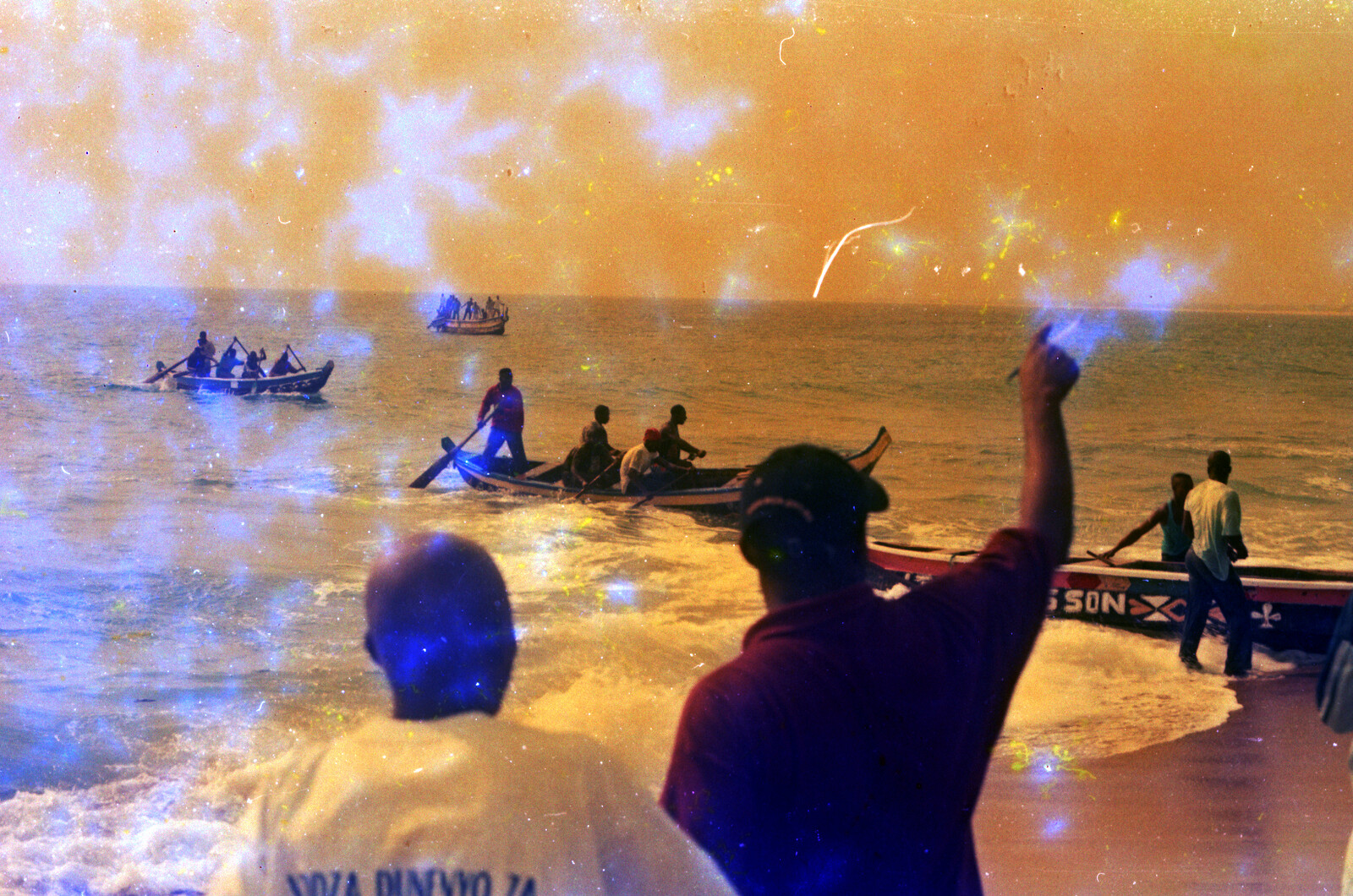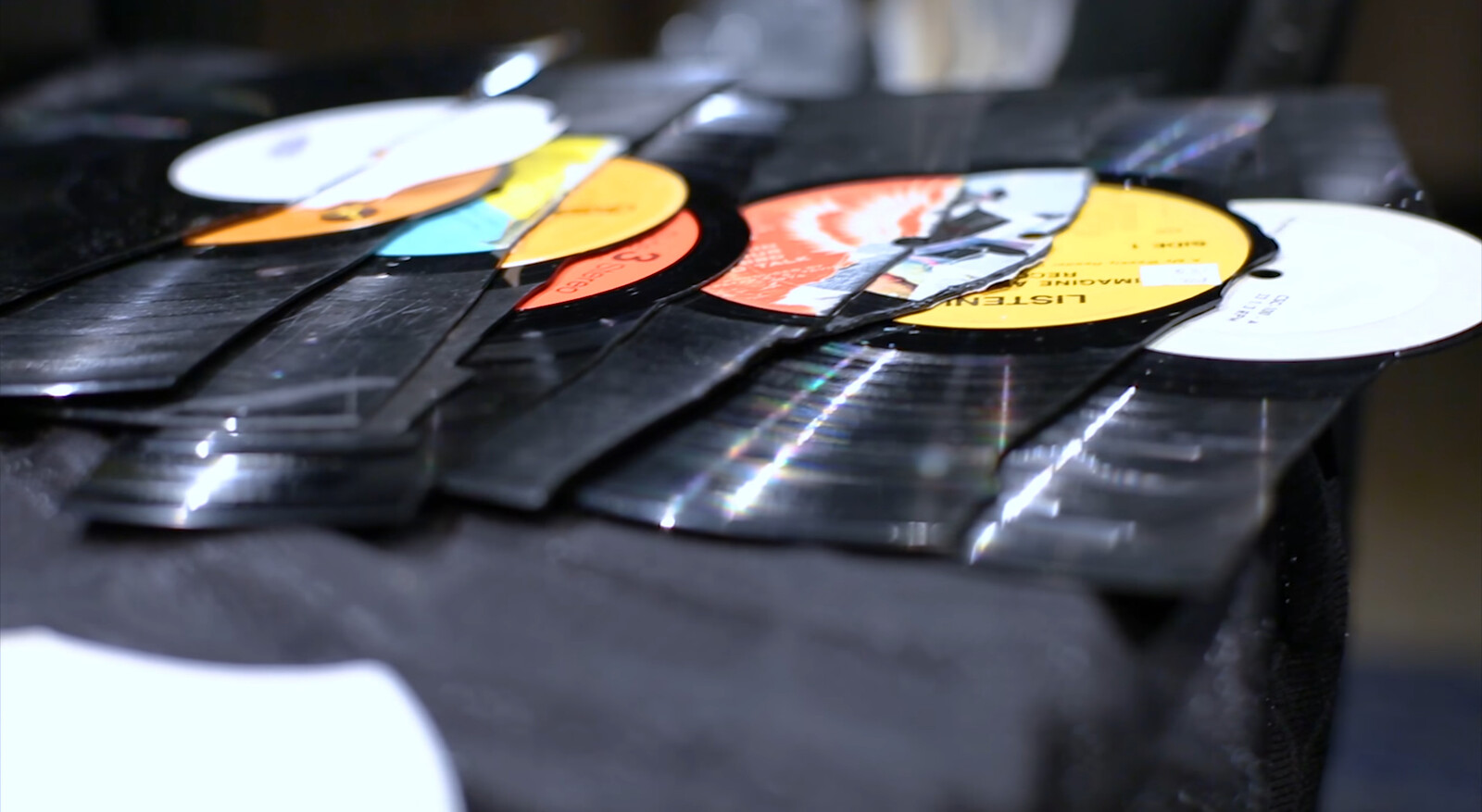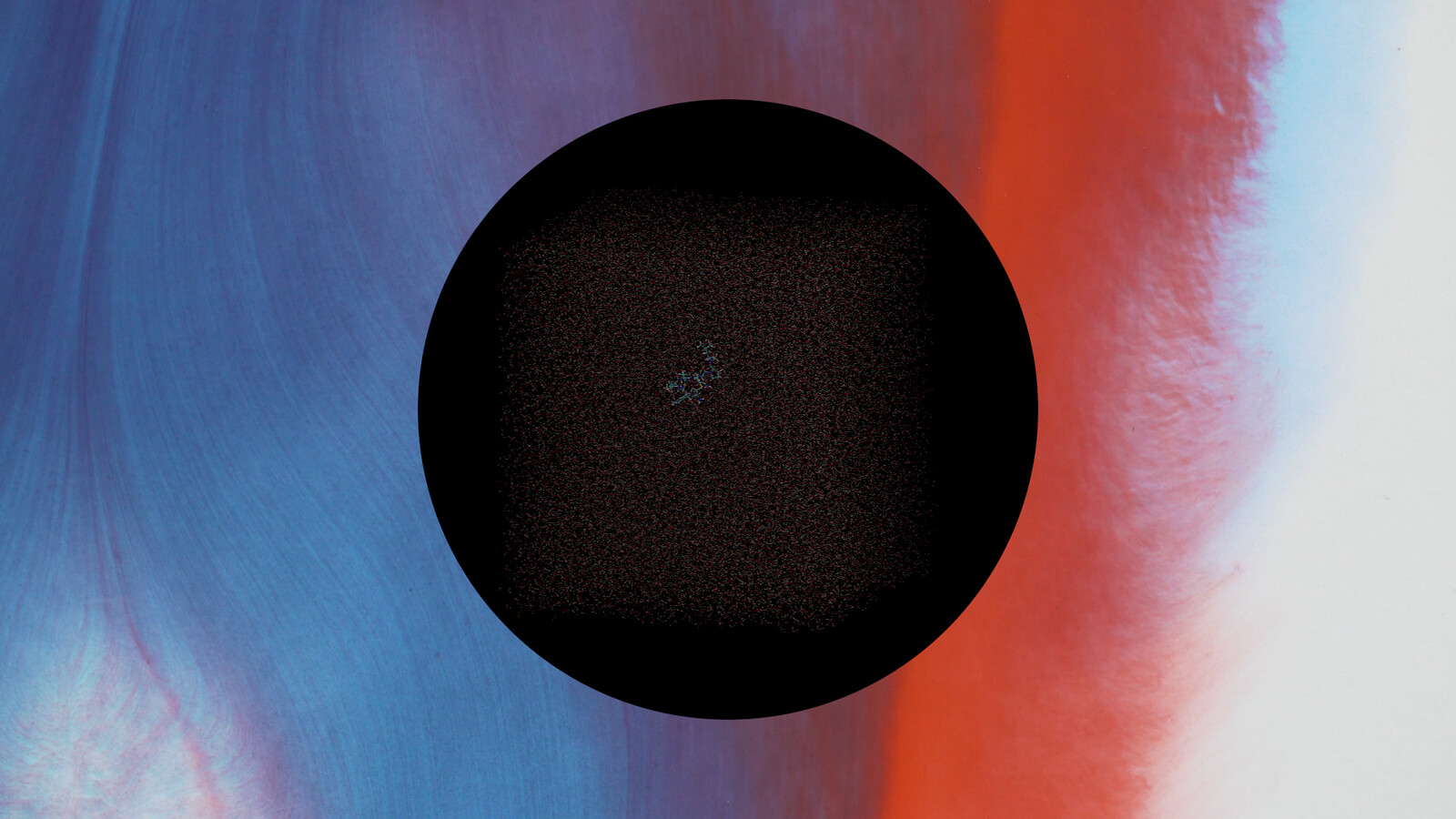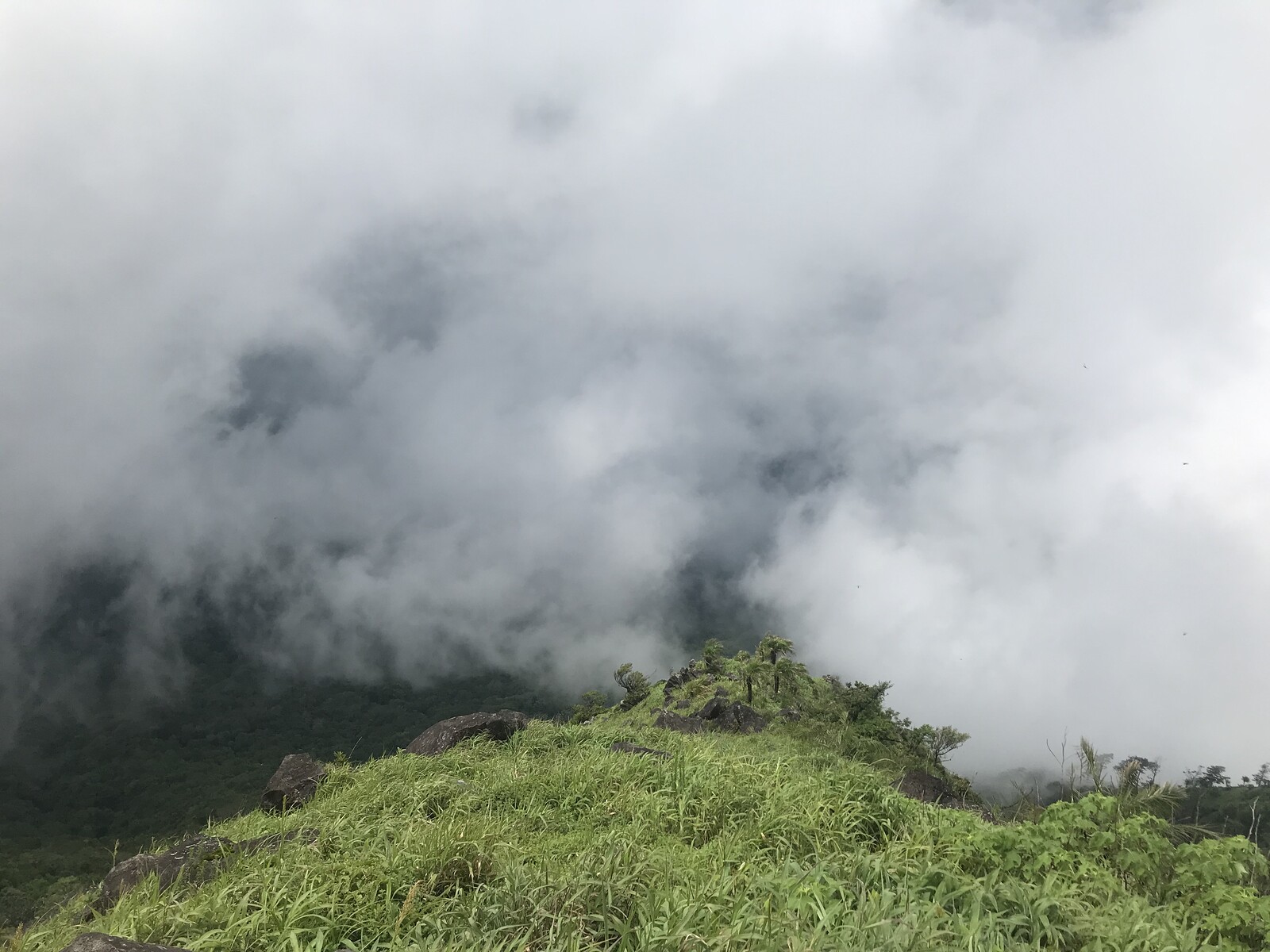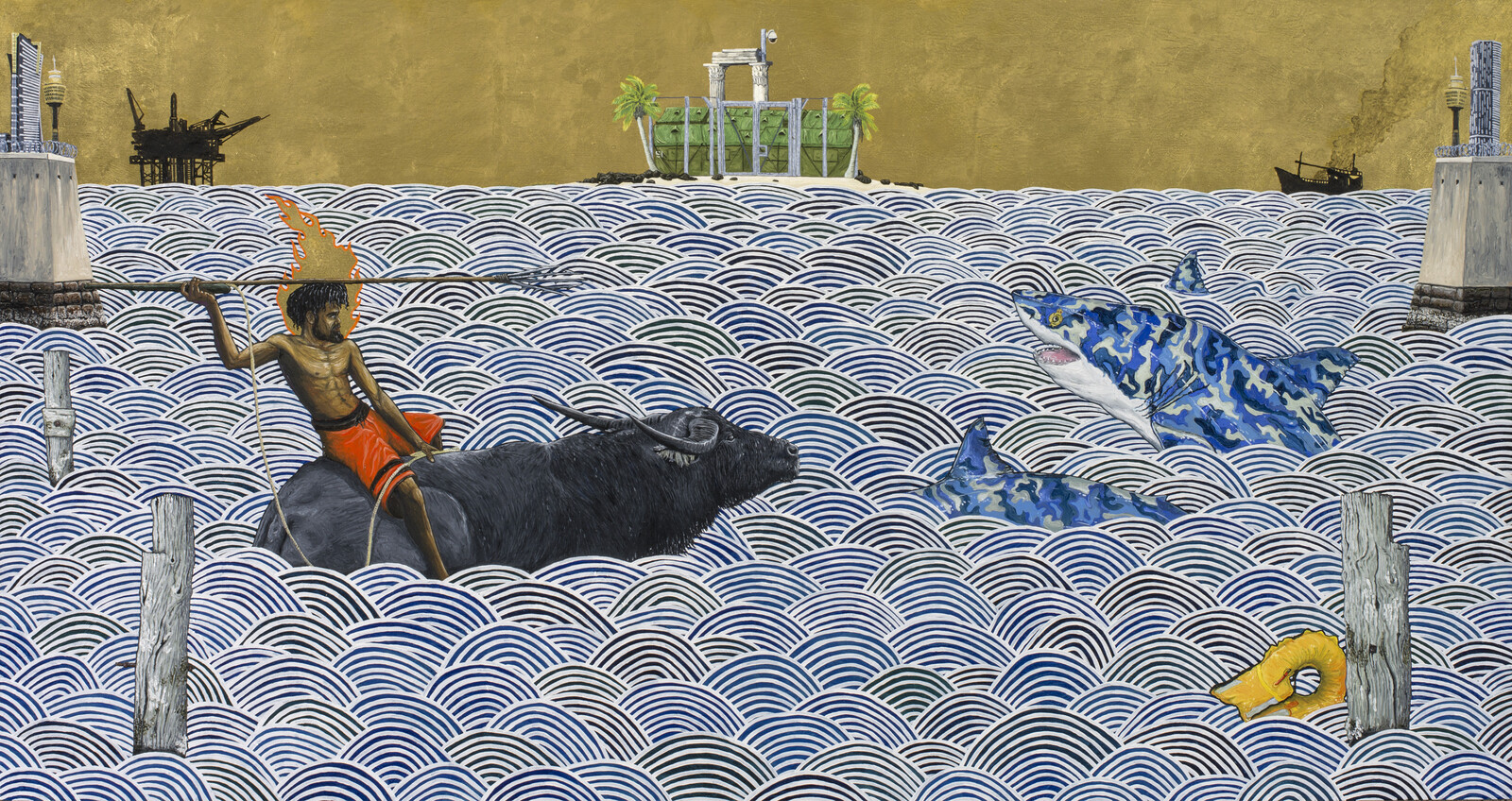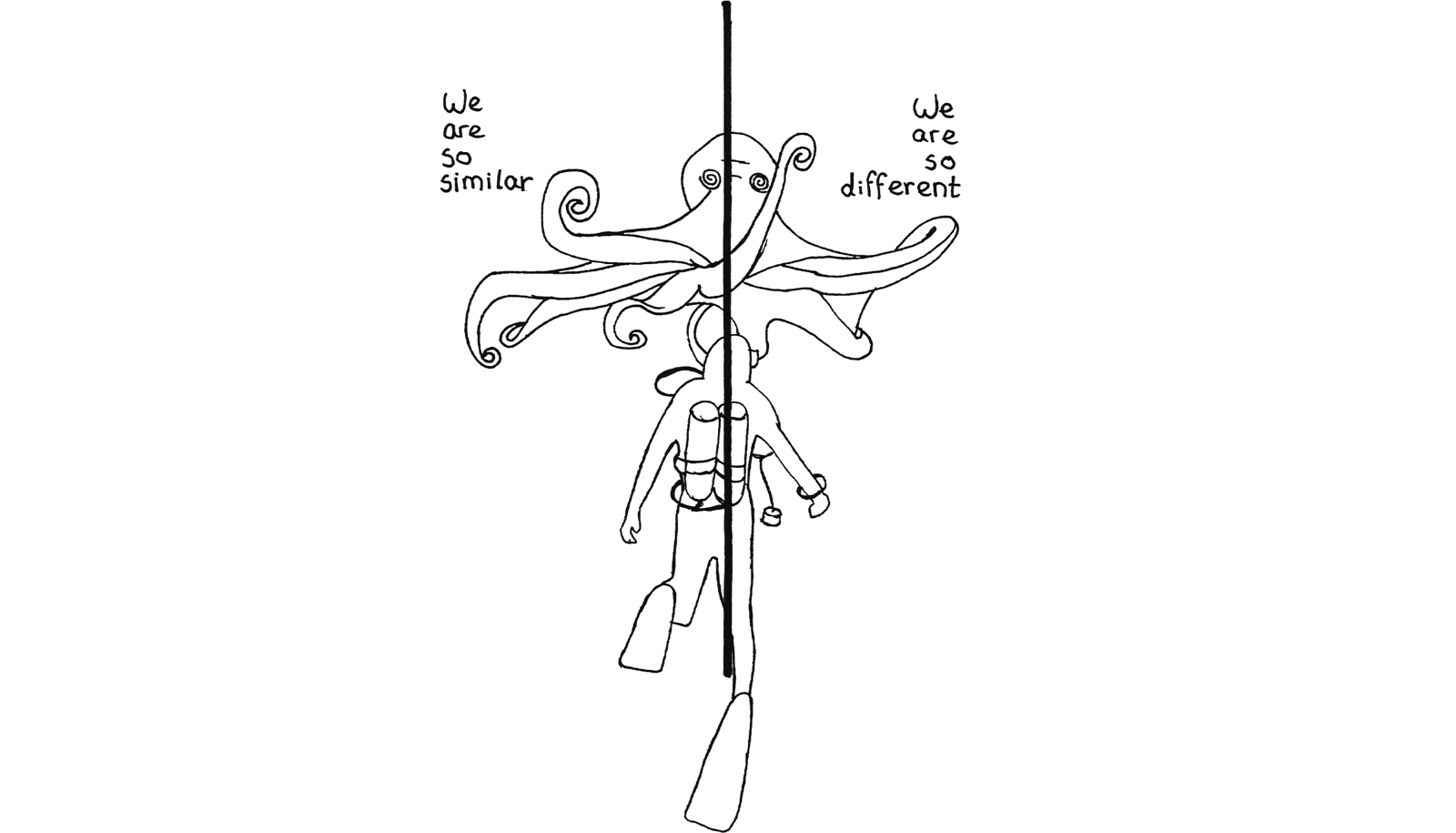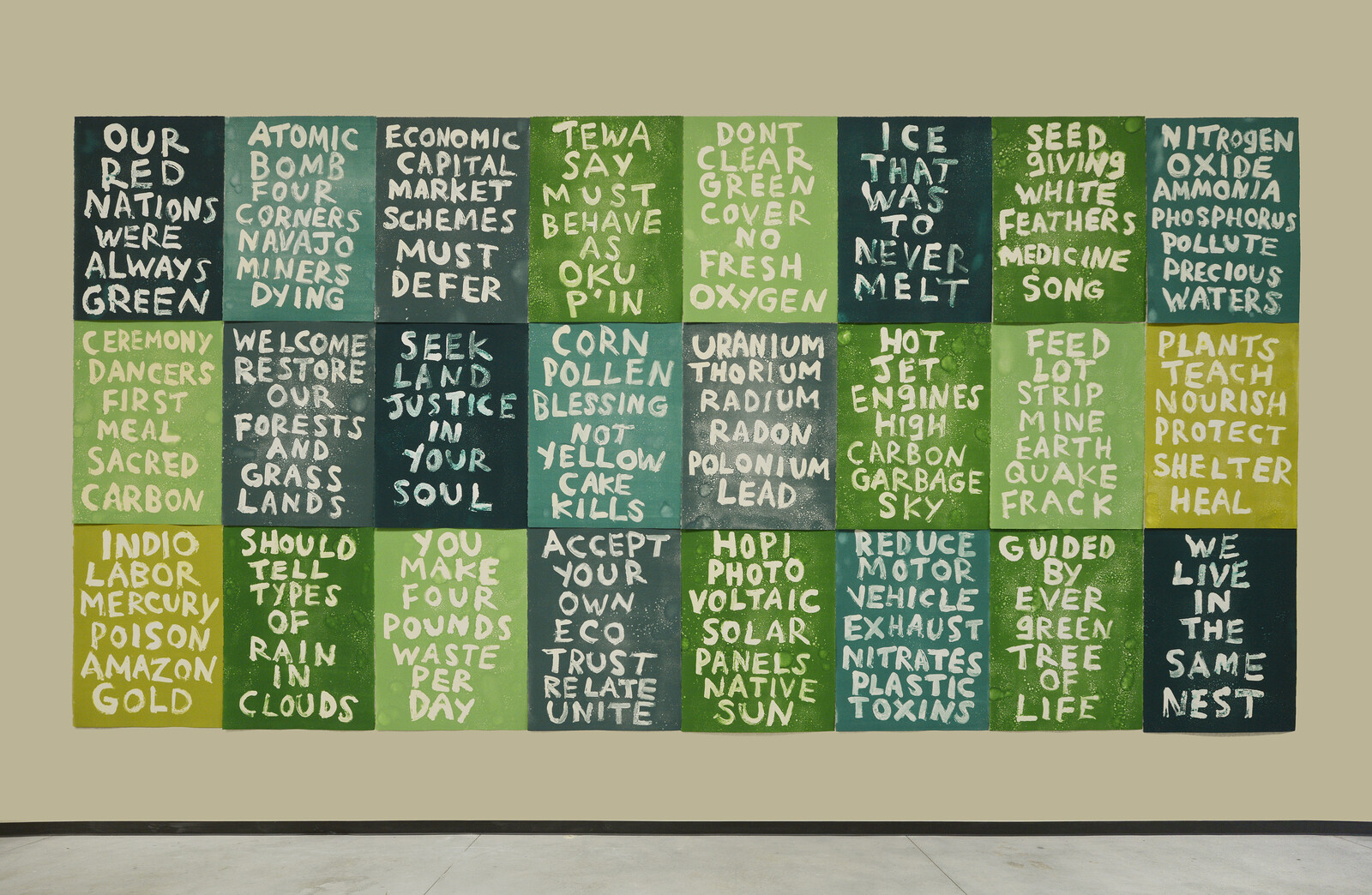Hearing the buzz
We humans evolved to survive in a world with specific types of matter and energy; our particular hominid ancestors thrived by favoring interpretation over instinct. Their creaturely scanners and sensors were tuned to available energies on Earth. Adaptable to an astonishing variety of ecological niches, our land-based and diurnal relations spread across a planet oxygenated by phyto-kin and stocked with foods we needed as heterotrophs (we cannot make our own nourishment from water and sunlight as autotrophs do, but glean it from other living things). The planet is suffering from our ubiquity and success. But let us stay with “just so” origin stories and the future imaginaries of survivance that they foster.
Sound accompanied us—a world of signals that first we “heard,” then learned to “listen to,” and eventually came to “utter.” As critters go, we were not particularly good at this sense, but proved able to concertize it with whatever else was coming in, cross-checking modalities against each other, sounding our habitats through mimicry and analogy, matching and sniffing as we went. Does this sound-wave correspond to that set of photons coming from something flittering in the trees? Is that visceral, low-frequency vibration associated with that sulfurous smell emanating out of that fissure? Thinking with Jakob von Uexküll’s early-twentieth-century designation of the communicative sphere of each creature as a separate “biosemiotic Umwelt,” we can now toy with ecological theories of perception based on the species-specific “affordances” of our animal body types (headspace and glabella! ambit of neck swivel!).1 Terran semiosis is shaped and informed by the physics, gravity, and matter of this planet and no other, even as we humans fantasize a colonial jump to Mars.
Artist Jenna Sutela is not content with these rustic curbs on sentience, or the limits placed on what signals we can take in as part of everyday living. Much like Surrealists, she is interested in a mode of survivance that wants to go beyond human-limited liveliness and float above its quotidian limits. She has long been interested in checking out what else is going on in our watery, interconnected, resonating, oscillating situation. In Sutela’s practice, symbiosis—“with-living”—is not about appropriating or parasitizing, but about collaboration.2 And of the partnering, signaling entities that constitute her collaborators, not all are organic. But whether machinic (prosthetic) or microbial (symbiotic), Sutela’s partners show up in the work, and in the discourse, to transcend our limits. They question the original equipment of an imagined urbody, constrained by human biosemiosis.3 Kombucha as a homebrew computer, operated by a symbiotic colony of bacteria and yeast, generating alien poetry for the human gut, voiced in lilting tones. Victorian lady-spiritualists, channelers of French-sounding Martian communications revived by automatic writing. Music scored stochastically by the wiggling vibrations of bacteria. All these susurrating signals are of interest.4
Sutela’s artworks often feature both mediums and media. Code is handy as a translational and transductive tool for varieties of resonating energies in conventional digital media (such as video), but the physical material of more-than-human species are invited to occupy her as “medium,” as with the nineteenth-century spirit mediums who intrigue her. She ingests slime mold to allow its distributed intelligence to guide her actions; she collaborates with bacteria to conjure a linear if illegible script, using the nonrandom wanderings of Bacillus subtilis to teach machines how to transcribe Martian. The collaborations render AI (as machine learning) just as mysterious as AI (as alien intelligence)—where the “aliens” can be found inside the little microbiome cosmos in our own very human guts.


Jenna Sutela, nimiia cétiï, 2018, HD video, sound, 12’02”, video still. © Jenna Sutela.
Stimulated by the residency at MIT that would lead to Wet-on-Wet, Sutela reached out to materials scientist Markus Buehler, whose creative work with molecular sonification and water as a transductive and translational medium recalled for her the folk belief in “dosing” this essential fluid with spiritual potentials.5 Sutela was specifically drawn to Buehler’s recent innovations (made available on Spotify, SoundCloud, and other non-science platforms) that model the vibrations of molecules using water as a medium for sound.6 There are scientific tools in use, but Buehler applies them using his own self-consistent logic, leading to operations he wants to describe as “artistic.” This follows the conceptual insight of Sol LeWitt—when strictly applied, logic has the potential to become profoundly illogical.
The logical part begins with nanoscale vibrations in a single molecule, derived and calculated from the quantum properties of constituent atoms. These molecular vibrations (on the scale of 10¹³ to 10¹⁴ Hz, e.g. very high frequency) are then transposed into the humanly audible spectrum (between 20–20,000 Hz). This is where the creative artistry enters for Buehler, and where the “self-consistent” extrapolations of his scientific methods begin. By selecting specific frequencies to transpose, Buehler draws on musical intuitions as he attempts to preserve the character of the ratios between atomic frequencies. In theory, such ratios convey the “signature” of that material, even as the creative selection of frequencies informs the computational system he will consistently apply across hundreds of thousands of molecules.7
Transposing such frequencies down, down, down into the audible spectrum (while holding onto their ratio-relations), he generates tones that are then “played back” under a petri dish holding a thin layer of water. The water, in Buehler’s words, “translates” the tones into visible wavelets, not unlike the dancing particles of a Chladni plate.8 Buehler then makes video recordings of the wavelets that are fed into machine learning programs, trained to seek characteristic differences in the patterns of specific proteins—or in Sutela’s terms, attempting to render visible the audible “spirit” with which the water has been permeated.
Buehler adapted a neural net specifically for this part of his collaboration with Sutela, pushing the spacy patterns of joggling wavelets through the machinic imaginaries he had already detoured from Google DeepDream (his modifications were intended to avoid the usual eyeballs, puppies, and kittens).9 This amended neural net then found wavelets in the thin washes of pigment in Sutela’s wet-on-wet watercolors, analyzing the artist’s videos of her analogue painting operation and hallucinating “signatures” of wavelength frequencies in the chromatic pooling. Buehler, who is a full professor and lab director at MIT, asserts “I can only do this because I have a strong scientific reputation.” He must “break the rules” to achieve what he calls an artistic composition of iterated wavelets and sonorities, keeping overtones “the way the algorithm predicts them.”10
Sutela frames Buehler’s methods differently. Algorithms are pressed to confront a strangely metaphoric category she calls “emotive molecules” (mostly human neurotransmitter chemicals), although the machine learning training set has no filter for “emotion.” Seeking the pattern of wavelets derived at the frequency of quantum oscillations, crucially transposed, the machine is trained to track pixel combinations, not human feelings. Yet humans are the interpreters whom DeepMind’s Inception programs ultimately address; human ears are the meaty equipment that must make sense of molecular vibrations. The collaboration between artist and scientist thus plunged both Sutela and Buehler into deep waters, into the realms of the siren: resonances that attract, but threaten to permanently entangle; waves that are visually mastered from above, but could drown us, once we dive in. The collaboration led them both, I would argue, into the cultural realm of biofiction.11
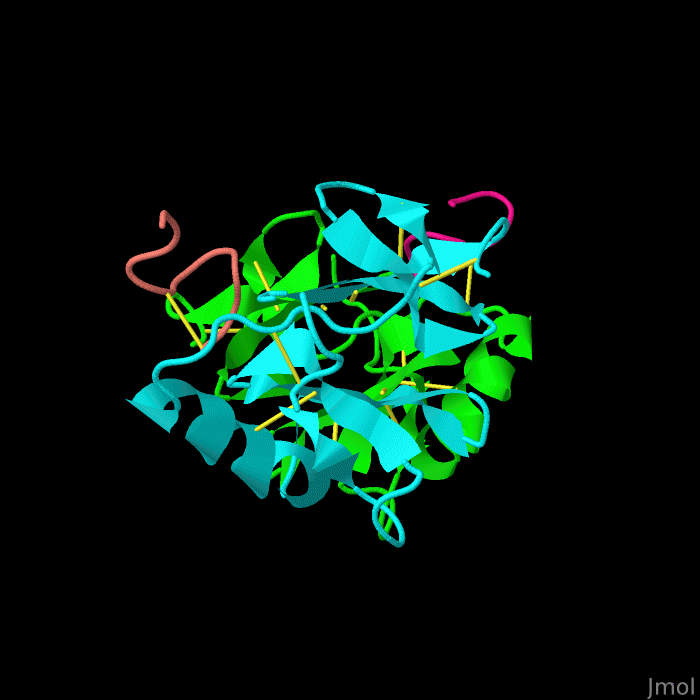

3D model of carrier protein Neurophysin-2 (green and cyan) complex with oxytocin (magenta and salmon). Source: “Neurophysin,” Proteopedia, eds. Alexander Berchansky, Michal Harel, and Joel L. Sussman.
What does it mean to extract oscillatory data from protein molecules for playback and play? Models, mediums, and mediators are needed to make “data” out of matter, allowing nanoscale phenomena to be made available to the human sensorium.12 But unlike the rigid tinker-toy molecule models of yore, which spatialized the flat diagrams that mapped chemistry’s rings and bonds, contemporary molecular models (following the revelation of DNA’s helical structure) are interactive and dynamic, understood to be full of springy chains and folded, stretchy links, always-already in a vibrational mode.13 It is this type of animated, three-dimensional model, attempting to address molecular motion, that Buehler authorized in the collaboration with Sutela.
Buehler’s extensive experience with these interactive dynamic models, and his eagerness to use creative tools to explore them in vitro, met Sutela’s request to address emotional agency in vivo—the human body in which oxytocin, for example, acts out its role as a hormone peptide whose amino acids propel all kinds of mammalian reward systems. Oxytocin is simple from Buehler’s perspective, as it does not engage in the kind of folding he sees in proteins. Yet according to the PubChem open chemistry database, the 3D conformations of oxytocin compounds cannot be simulated; this kind of modeling is “disallowed … since [there are] too many atoms, [it is] too flexible.”14
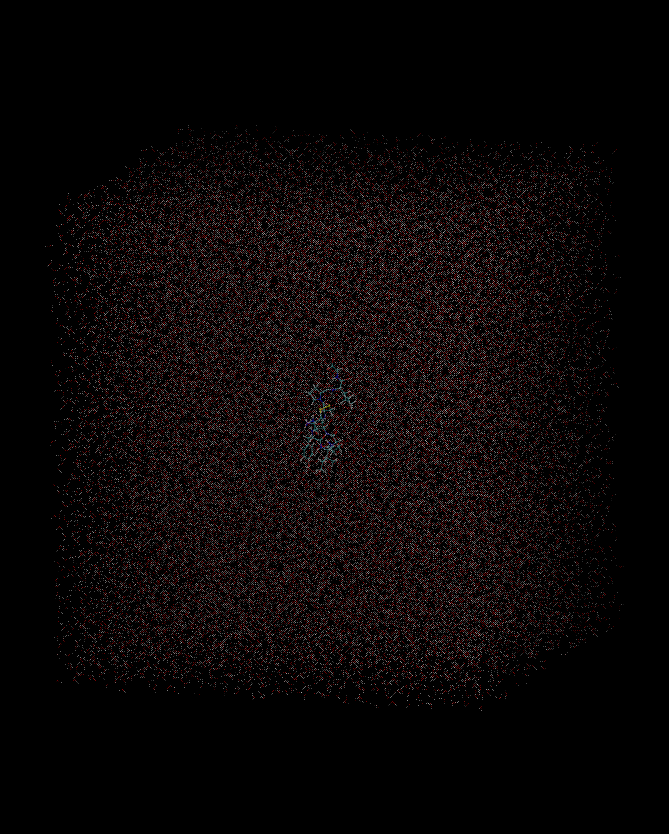

Molecular simulation of oxytocin in water, by Markus J. Buehler and Kai Guo, Buehler Lab MIT, 2021.
Such apparent prohibitions are seductive siren songs for the regime of art. Likewise, Buehler, freed from the constraints of science, has no problem using his tools creatively to provide an image of the peptide’s vibratory quantum dance, here simulated by his lab’s postdoctoral researcher Kai Guo. Sutela imagines emoting along with the frequencies Buehler and Guo provide through her own video-recorded painting process that gives the artwork its title: Wet-on-Wet. In Sutela’s world, the vibrating entities she encounters in Buehler’s work are rich with poetic capacities and emotional agency. It is the body, she claims, in which these organic compounds must be imagined in their dancing: a body devoted to making such substances, dependent on a multi-species world ingested and metabolized for mental and emotional health (as in the gut-brain, or circadian systems that benefit from serotonin precursors, such as tryptophan in foods).15
The art world may join Sutela in experiencing the protocols of simulation (Buehler’s rigorously self-consistent transpositional method, his retooling of Google DeepMind Inception) as conceptually akin to watery “dosing.” Could Wet-on-Wet, as a painting process, also be “dosing” of a kind? The wet on wet method negotiates with material viscosities of soluble pigments dosing their watery substrate; the artist initiates the flow but cannot fully control it. We who watch are bathed in this metaphor—wetness is Sutela’s stand-in for boundaries dissolving between science and art, speculation, biofiction, computation, and emotion.
Buehler trusts water as a translator, and it is his essential revelation that we can “hear” a molecule and see its vibrations. But Sutela’s title suggests a much less reliable relation with H2O. One after the other, we bathe in the computationally-calculated frequencies of emotional trigger chemicals, reading her gnomic texts about these messengers, transmitters, and compelling agents. As we see human-made pigments pulsing in thin films of water and hear Buehler’s buzzing tones, Sutela’s intended valence is bidirectional. The molecules might make us emotional, and we might get emotional thinking about what they do. These neuroactive chemicals are familiar to most of us. Many of them proliferate via heavily-capitalized biopharmaceutical industries—serotonin, dopamine, oxytocin, and norepinephrine—which all have direct and powerful effects on mood, sometimes replacing conscious mental activity in favor of primordial body drives. (Women know synthesized oxytocin as “Pitocin,” a labor-inducing drug that works even on a person under total anesthesia.) Sutela is particularly interested in that neuropeptide oxytocin, because it is vernacularly known as the “love hormone,” fostering creaturely bonding.16 Still other molecules Buehler brings within earshot offer Sutela a therapeutic placebo effect—the calming drone of what we’re told is “an antibody.” (A placebo, because we have no idea what this antibody is good for—but we’ll take what we can get during this pandemic.)
Placebo effects
Wet-on-Wet video opens with the frequency imputed to oxytocin—and to this aging ear, tipped toward a computer speaker in avid listening mode, the tone is far from pleasant. Capturing the two-way power of a chemical that fetuses produce in placentas to command maternal love, this “oxytocin” whine summons the mythic human ambivalence toward the commands of the siren. What Buehler experiences as nuanced “compositions” confronted this listener with the mono-frequency intensity of a sine wave.17 There is no Rachmaninoff here, no romantic imagining of what the maternal bonding hormone sounds like, not even La Monte Young and Marian Zazeela offering us cosmic sonorities of standing waves, (despite Sutela’s observation that “Oxytocin triggers an oceanic feeling.”)18 Instead, there is something like the calibrated sound of an Opelt-Helmholtz siren experiment, in which a perforated disc, when rotated in front of a carefully focused jet of air, generates miraculously precise frequencies in proper mathematical relation.19
Proving that pitch and rhythm are deeply related, the siren experiment freed composers to explore the capacity of infrasonics or visceral beats to entice and control the body, “closely mirror[ing] the original pairing of danger and ecstasy, and the immediate effects of these sounds on the body, which characterized the ancient siren song.”20 Uniting a fascination with placebos (the pharmakon as both poison and cure) and our seduction by dangerous sirens, Wet-on-Wet plies the murky damp terrain of emotions—do they possess us, or do we possess them? Sutela will not resolve this for us; these siren songs ask us simply to open ourselves to the sonified, colorful flow.
While Wet-on-Wet’s sonorities are achieved with Buehler’s complex, self-consistent computational protocols, “molecular frequencies” are not literally acoustic (e.g. they are not available to human cilia and cochlea). Buehler must make them so. Important to him is the fact that more than one tone is possible, as most molecules have multiple oscillating parts, just as wavelets can cross each other in the ocean. Conventional “timbre” is missing—there’s no musician to impart a mysterious organic ensouling of the sound; pure data makes pure tones, not “wind” or “strings.” The technologies are virtual and cyborgian; creative simulations that locate the human ear in circuits of machine sonorities that “play” molecular atomic structures in an unlikely acoustic range. Likewise, we are not seeing the molecules indexically, but as animated 3D virtual models. Neither do we see the index of wavelets as originally recorded. Rather, we see machine recognition/projection of “wavelets everywhere,” derived from Jenna’s watercoloring pigment flows.21 Adopting the heuristic of Ian Hacking’s notion of scientific realism, we agree to feel molecules moving because we hear and see the effects of those movements through tools and models we tend to trust.22


Roman bronze Siren, possibly commissioned by the Colonna Family, ca. 1571–90. Source: Metropolitan Museum of Art.
Sirens
The strange ambivalence that the name “siren” portends was tamed by the Opelt-Helmholtz device only until musicians reclaimed the uncanniness of those alien scientific tones. Art wants the emotions summoned by menacing or alluring oscillation, the tropes of the original Greek σειρά (seirá, rope or “entangler”). Variants of the mythological siren entanglers were parsed by Plato, with one branch of the group functioning under the governance of aqueous Poseidon and assumed to have responsibility for “generative” functions on Earth, “of which the sea is emblematic.” (Plato sorted others as Zeus’s branch of celestial sirens, who governed Hadean purificatory rites.)23
How did this dangerous female, first sculpted with the body of a bird, end up as the fishy, scaly seductress of Renaissance fame? Tellingly, it seems to have been an Anglo-Saxon poet of the age of Beowulf who gave sirens their sinuous piscine tails, describing these marvelous creatures in the seventh-century Anglo-Latin Liber Monstrorum.24 Sutela, as one respectful of her native Finland’s witches and sea monsters, might indeed welcome one of these Nordic enchantresses into her wet, emotional world. Such a generative seductress should be cultivated as an ally, because “Contemnit tuta procellas” (“She defies the tempests”).25 Oscillating tones from her instruments (whether lyre or dulcet throat) would carry across, and be propagated through, a watery medium, her keening sounds appealing, above all, to the thirst for knowledge quenched at the price of death.26
Sutela’s self-soothing wet on wet painting softens these buzzing siren songs. A watery field flows with chroma in pulsing, propulsive waves. But the visual field also jiggles with more precise rhythms in the video, performing somewhere between the oily light shows of psychedelic rock and the flashing phosphenes we see when pressing our eyelids tightly together under the blinding sun. The tiny wavelets that DeepMind’s Inception reads out of the watery chroma provide a visible oscillation, in tempo with the somewhat painful tones of the molecule’s selected frequencies, paired up by the learning machine “the way the algorithm predicts them.” Buehler’s daemon of the molecule “responsible” for the frequencies in question dances in a circle within the rectangle of the conventional landscape format. Each peculiar, specific, asymmetric form twists and gyrates in synchrony with the buzzing of the siren tone—contrasting with the soft-edged chromatic waves of Sutela’s painting. The granular scotoma, those watery distortions of the visual field, build up slowly for each molecule. Like a visual aura, they seem to foreshadow gathering emotions, despite the constancy of the sound. Yet unlike an aura, the wavelets convince us they are the visual evidence of oscillation, out in the world, neither inside us nor projected by a machine. We see the perturbations as singing the molecule’s siren song, seducing us to think, and feel, together—through the asynchronous possibility of collective oscillation.
Jakob von Uexküll’s notion of the Umwelt and his theory of biosemiosis are both beautifully explained in: Jakob von Uexküll, “A Stroll Through the Worlds of Animals and Men” (1934), in Instinctive Behavior: The Development of a Modern Concept, trans. and ed. Claire H. Schiller (New York: International Universities Press, 1957), 5–80. The idea of bodily “affordances” can be found in James J. Gibson, The Ecological Approach to Visual Perception (Boston: Houghton Mifflin, 1979).
Sutela’s practice has already inspired this author to circulate the neologism symbiontics, a portmanteau that combines the “ontics” of technical philosophy (that which is) with the biological theories of symbiosis developed by Lynn Margulis—in other words, symbiosis-as-that-which-is. So far, the sites in which “symbiontics” has been seeded include Olafur Eliasson: Symbiotic Seeing, Kunsthalle Zurich (2020); Jenna Sutela, NO|NSE|NSE, Trondheim Norway (2020); Caroline A. Jones, “Virions,” Artforum 58, no. 9 (2020): 98–101, 196; Caroline A. Jones, “Symbiontics: a view of present conditions from a place of entanglement,” Brooklyn Rail, July/August 2020; Agnieszka Kurant, Collective Intelligence, eds. Stefanie Hessler and Jenny Jaskey (Berlin: Sternberg Press, forthcoming), and various online forums. My polemic deeply respects and joins forces with concepts already in circulation, such as Donna Haraway’s “sympoiesis,” which in turn draws on Scott Gilbert’s “symbiopoiesis.” For my part, because I am after broad cultural change, I want to lodge my polemic directly inside ontology (the study of what it is to exist), rather than theoretical biology. See: Donna Haraway, Staying with the Trouble: Making Kin in the Chthulucene (Durham: Duke University Press, 2016); Scott F. Gilbert et al., “Symbiosis as a source of selectable epigenetic variation: taking the heat for the big guy,” Philosophical Transactions of the Royal Society B: Biological Sciences 365 (2010): 671–678.
For “biosemiosis,” see Uexküll, “A Stroll Through the Worlds of Animals and Men.”
Reference is being made here to Sutela’s many collaborations with microbes, coders, and musicians, from Nam Gut to nimiia cetii. On the latter, see: “Jenna Sutela: Nimiia Cétiï,” Somerset House, September 2018, ➝.
The Buehler-Sutela collaboration was facilitated by my colleagues at the Center for Art, Science, and Technology at MIT, producers of Sutela’s residency at MIT.
An indication of how frequency is modeled in the lab includes Chi-Hua Yu, Zhao Qin, Francisco J. Martin-Martinez, and Markus J. Buehler, “A Self-Consistent Sonification Method to Translate Amino Acid Sequences into Musical Compositions and Application in Protein Design Using Artificial Intelligence,” American Chemical Society Nano 13, no. 7 (2019): 7471–7482; Zhao Qin, Qingyi Yu, and Markus J. Buehler, “Machine learning model for fast prediction of the natural frequencies of protein molecules,” RSC Advances 10, no. 28 (2020): 16607–16615; and Markus J. Buehler, “Liquified protein vibrations, classification and cross-paradigm de novo image generation using deep neural networks,” Nano Futures 4, no. 3 (2020): 035004.
Markus J. Buehler, in conversation with the author, May 19, 2021.
Buehler, “Liquified protein vibrations.”
Buehler calls this method “Protein Inceptionism” (see Buehler, “Liquified protein vibrations”) in evident emulation of Google’s 2015 “Inceptionism” post: Alexander Mordvintsev, Christopher Olah, and Mike Tyka, “Inceptionism: Going Deeper into Neural Networks,” Google AI Blog, June 17, 2015, ➝.
Markus J. Buehler, in conversation with the author, May 19, 2021.
For biofiction, see Caroline A. Jones, “Biofiction and the Umwelt: Anicka Yi,” in Hugo Boss Prize, Twenty Years (New York: Solomon R. Guggenheim Foundation, 2016), 90–95. On science edging into cultural realms, I note that nanoscience in particular operates through powerful, computationally-enhanced imagery, prompting nanoscale scientists to post “galleries” of images in the way artists update their websites with installation shots. In Buehler, “Liquified protein vibrations,” the scientist openly calls for “nano-inspired art” and coins the neologism “materiomusical” to describe his process.
Buehler: “My modeling methods allows for these molecules to be studied in their dynamic, quantum chemical way … and visualized … and be explored artistically …” Communication to the author, May 19, 2021.
“The first recorded use of a physical molecular model in organic chemistry was by August Wilhelm Hofmann in 1865. In a lecture entitled, On the Combining Power of Atoms, before the Royal Society of Great Britain, he used the metaphor of croquet balls joined by sticks to describe methane, chloroform and other compounds of carbon.” Martin F. Schlecht, “Historical Overview of Molecular Modeling,” Molecular Modeling on the PC (New York: Wiley-VCH, 1998), ➝. Vibrational spectroscopy began to enter in the early twentieth century, and force field analysis contributed to dynamic energy modeling, developing up through DNA’s double helix. In a collaboration of the mid-90s, computation allowed the creation of a “virtual biomechanical environment,” dubbed VIBE, within which the user/modeler “enters this {virtual} theater and interacts with the three-dimensional simulation by means of a wand-link remote control device. The modeler’s head and hand movements are tracked with a six-degrees-of-freedom electromagnetic sensor to maintain the correct perspective in the virtual environment. The wand may be used to dock a ligand into a binding site, and bumps and other interactions are experienced as sounds.” See also Carolina Cruz-Neira, Randolph Langley, and Paul A. Bash, “VIBE: A virtual biomolecular environment for interactive molecular modeling,” Computers & Chemistry 20, no. 4 (1996): 469–475, 477.
Under “3D Status” for the synthetic form of oxytocin—the in vivo molecule of which was mapped in 1952—it reads: “Conformer generation is disallowed since too many atoms, too flexible.” Conformer generation refers to the process of building a 3D simulation of a molecule that covers what is called its “conformational space,” or how many clear positions the atoms can hold. (Different conformations of the atoms can have different chemical effects.) See National Center for Biotechnology Information, “Oxytocin,” PubChem, 2005–present, ➝.
Sutela writes: Oxytocin triggers an oceanic feeling / This is a dopamine fix / Serotonin being and serotonin cooking / Cycles of norepinephrine action / ATP energy tap / Bathing in growth factors brings plasticity / An antibody for protection
This “bonding hormone” has broad effects among primates. See Roman M. Wittig et al., “Food sharing is linked to urinary oxytocin levels and bonding in related and unrelated wild chimpanzees,” Proceedings of the Royal Society B: Biological Sciences 281, no. 1778 (2014): 20133096. To translate: oxytocin is found in the urine of non-kin when these unrelated chimpanzees engaged in rare food-sharing, community-building activities. The authors are agnostic as to cause or effect.
Buehler disagrees with this characterization, and has clarified that these are not sine wave tones. True: I am a naïve listener with older ears, unable to hear separate tones, “timbre,” or dynamic variation in what are monotones for me. Compare Buehler’s conviction of multi-tone stability to the decisions of composer Henry Jackman, who when scoring these chemical effects on humans for the film Cherry (2021), said “By the time I got to the P.T.S.D. and Oxytocin, the losing your mind part of the film … I became so obsessed by having a sound that wasn’t stable … I started {using} loads of flutter and shoving things through seriously old, mid-’70s synths where the oscillators are a bit damaged and the filter’s a bit noisy … to just fuzz things up.” Henry Jackman, quoted in Amon Warmann, “Henry Jackman Modifies Sounds Using Broken Cassette Players for Apple TV+’s Cherry,” Composer, February 2021, ➝.
See Sutela’s poem, footnote 15.
Designed for research purposes by Hermann von Helmholtz, this type of siren was described in Friedrich Wilhelm Opelt, Allgemeine Theorie der Musik (Leipzig: Johann Ambrosius Barth, 1852). Opelt’s illustrations served as the template for Rudolph Koenig’s mass-produced apparatus. Interestingly, the siren disc apparatus both demonstrates the known musical intervals and the relation of pitch to frequency, but also helped to clarify the function of autocorrelation in psycho-acoustics—e.g. how the mind translates and correlates distinct frequencies as being “the same” as one another.
Alexander Rehding, “Of Sirens Old and New,” in The Oxford Handbook of Mobile Music Studies, vol. 2, eds. Sumanth Gopinath and Jason Stanyek (Oxford: Oxford University Press, 2014).
So uncannily persuasive are the wavelets discerned by the machine learning system that initially I took them as indexical; I am grateful to Markus Buehler for clarifying the process for this effect.
This is extrapolating from Ian Hacking, Representing and Intervening: Introductory topics in the philosophy of natural science (Cambridge: Cambridge University Press, 1983). Hacking does not posit that “reception” allows either representing or intervening. Rather his now classic argument is that physicists’ capacities to “spray electrons” to move something gives them both agency and robust confidence in the electron’s existence, despite the great efforts that must be made to “see” electrons.
Ebenezer Cobham Brewer, “Si’ren,” in Dictionary of Phrase and Fable (Philadelphia: Henry Altemus Co., 1898), ➝.
“…first I will discuss those things which are in some part to be trusted, and then let each judge for himself the following material, because throughout these monster-filled caverns I shall paint a little picture of a sea-girl or siren, which if it has a head of reason is followed by all kinds of shaggy and scaly tails.” Translation from the Old English: “Liber Monstrorum Translation,” in Andy Orchard, Pride and Prodigies: Studies in the Monsters of the Beowulf-Manuscript (Cambridge: D.S. Brewer, 1985), 257.
Paolo Giovio, Dialogo dell’imprese military et amorose (Lyon: Guillaume Rouille, 1574), quoted in Ian Wardropper, “Siren, Rome, ca. 1571–1590,” European Sculpture, 1400–1900, in the Metropolitan Museum of Art (New York: Metropolitan Museum of Art, 2011), 90–92, ➝.
“They are mantic creatures like the Sphinx with whom they have much in common, knowing both the past and the future … Their song takes effect at midday, in a windless calm. The end of that song is death.” This reading of the role of the siren in Homer’s Odyssey comes from literary scholar Jane Ellen Harrison, Prolegomena to the Study of Greek Religion (London: C.J. Clay and Sons, 1922), 199.
Survivance is a collaboration between the Solomon R. Guggenheim Museum and e-flux Architecture.











